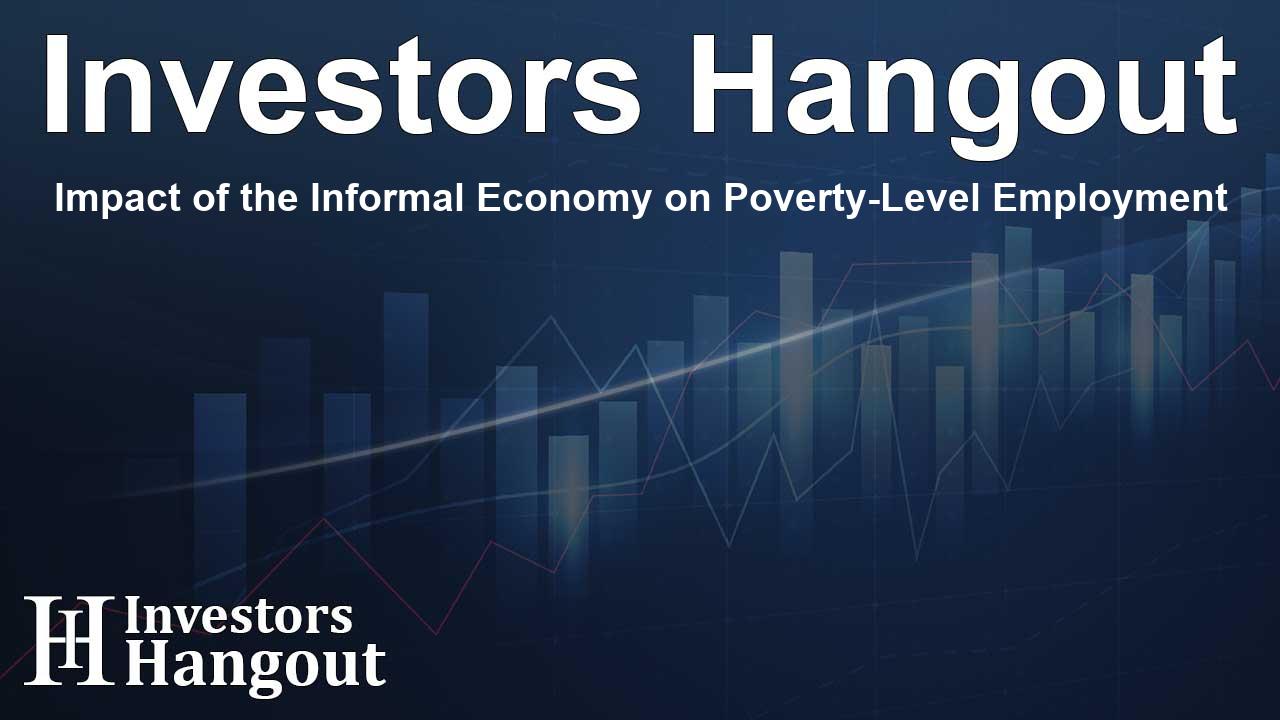Impact of the Informal Economy on Poverty-Level Employment

The Informal Economy's Role in Employment and Poverty
The informal economy has become a topic of increasing interest as nearly 670,000 individuals in the U.S. engage in 'off-the-books' work daily. Recent analysis, particularly from the Ludwig Institute for Shared Economic Prosperity (LISEP), reveals that this sector does not significantly aid low-income workers in overcoming poverty, challenging common misconceptions about its benefits.
Understanding the Study's Findings
LISEP's study utilized its innovative metric, the True Rate of Unemployment Out of the Population (TRU OOP), to evaluate the economic impact of informal work. This measure considers individuals aged 16 and older who are not only unemployed but also those working part-time involuntarily or earning below the poverty threshold. Remarkably, the study found that if informal earnings were factored into the 2024 calculations, the functional unemployment rate would only see a decline of 0.9 percentage points.
The Trends in Informal Work
Interestingly, even though the number of informal workers has decreased significantly compared to previous years, the effects of informal work on overall employment rates hardly shifted. This is attributed to more formally employed individuals taking on informal tasks to supplement their primary income.
The Realities of 'Off-the-Books' Work
According to Gene Ludwig, Chair of LISEP, many workers resort to informal jobs out of necessity rather than desire. He likened the situation to attempting to stay afloat in water that is still dangerously deep. For many, informal work does not equate to increased financial security, highlighting a common misconception.
Demographics in Informal Employment
Analysis showed significant demographic trends within the informal economy. Women and younger workers aged 18-24 are particularly overrepresented. These groups often experience greater challenges in the labor market, leaving them more susceptible to functional unemployment. The study noted that for every 1,000 women, 46 experienced informal work, compared to only 25 men, showcasing a stark contrast in experiences and opportunities within the job market.
Addressing Economic Challenges
Ludwig emphasized the urgent need for stable, full-time job opportunities that offer a robust standard of living. He argued that relying on a patchwork of informal jobs limits individuals' financial growth and perpetuates a cycle of poverty. The findings urge stakeholders to rethink the support and structure provided to lower-income workers.
Future Insights and Recommendations
The white paper titled "The Hidden Workforce: The Impact of the Informal Economy on Functional Employment" released by LISEP sheds light on these critical findings. This analysis forms part of their broader research into the economically marginalized and seeks to redefine how we view unemployment and underemployment in the modern workforce.
About the Ludwig Institute
The Ludwig Institute for Shared Economic Prosperity, established in 2019, strives to advance the well-being of lower and middle-income Americans through comprehensive research. Its primary goal is to develop new metrics that paint a clearer picture of economic conditions, particularly for families struggling to make ends meet. The organization’s efforts are crucial in shaping a more equitable economic landscape where transparent data can drive informed policy decisions.
Frequently Asked Questions
1. What is the main finding of the LISEP study?
The study shows the informal economy does not significantly help workers escape poverty, contrary to popular belief.
2. How does the TRU OOP metric work?
It's a measure that assesses unemployment, including those earning below the poverty line, providing a broader view of economic stability.
3. Who primarily engages in informal work?
Women and younger individuals are notably more involved in informal employment, often due to economic necessity.
4. What does Gene Ludwig suggest is needed for low-income workers?
Ludwig advocates for stable, full-time job opportunities rather than reliance on informal work.
5. Where can I find more information about LISEP's research?
LISEP's research, including the TRU metrics, is available on their official website.
About The Author
Contact Thomas Cooper privately here. Or send an email with ATTN: Thomas Cooper as the subject to contact@investorshangout.com.
About Investors Hangout
Investors Hangout is a leading online stock forum for financial discussion and learning, offering a wide range of free tools and resources. It draws in traders of all levels, who exchange market knowledge, investigate trading tactics, and keep an eye on industry developments in real time. Featuring financial articles, stock message boards, quotes, charts, company profiles, and live news updates. Through cooperative learning and a wealth of informational resources, it helps users from novices creating their first portfolios to experts honing their techniques. Join Investors Hangout today: https://investorshangout.com/
The content of this article is based on factual, publicly available information and does not represent legal, financial, or investment advice. Investors Hangout does not offer financial advice, and the author is not a licensed financial advisor. Consult a qualified advisor before making any financial or investment decisions based on this article. This article should not be considered advice to purchase, sell, or hold any securities or other investments. If any of the material provided here is inaccurate, please contact us for corrections.
